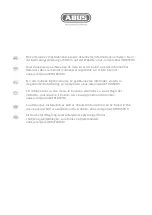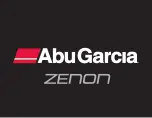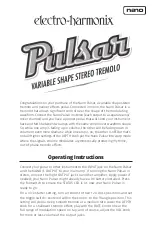
Fig. 28
Fig. 29
Fig. 30
Page Number - 19
Setup and Installation
Determining Where to Install the FST
Inline Connection
Regardless of the type of fuel delivery system, the FST Pro is most
effective at diagnosing malfunctions when connected inline with the
flow of fuel. The initial installation should be made at an access point
along the fuel supply line, as close as possible to the fuel rail (Figs.
28, 29 and 30). At this location, the fuel pressure and flow measured
by the tester will most accurately represent the conditions within the
fuel rail. Due to some engine compartment layouts and connector
locations, it may be necessary to connect the tester directly after the
in-line fuel filter, which may be located in the engine compartment,
under the frame, or near the fuel tank. In this case, be sure to carefully
inspect the fuel supply line between the tester and fuel rail for any
irregularities such as leaks, crimps, or kinks, as these may cause a
false diagnosis based on the tester readings.
Alternative Connection Locations
Connecting the FST inline as instructed above for the initial test,
ensures the most accurate fuel system diagnosis. However, in some
instances it may be beneficial to connect the tester at alternative
locations in order to more accurately pinpoint the exact cause of a
malfunction. Performing additional diagnostics at different connection
locations is detailed in the Testing and Diagnostics section of this
manual.
Selecting and Installing Adapters
The FST Pro includes adapters for connecting the tester inline with
the fuel delivery systems of a wide variety of US, European, and Asian
manufactured cars and light trucks. In most cases, making an inline
connection with the FST requires two adapters, one to connect the
fuel line from the fuel tank to the FST inlet, and the second to connect
the FST outlet to fuel line continuing on to the engine.
The FST utilizes female 3/8” SAE J2044 quick-connectors on the
ends of the inlet and outlet hoses that connect into the fuel line. This
is the same connection that is used on many newer makes and mod-
els of cars. If the vehicle being tested uses this adapter style, only one
intermediate adapter will be required. This should be evident upon
inspection of the vehicle’s connection.
All of the adapters included with the FST have an identification num-
ber stamped into them for easy identification. To determine an
adapter’s size and application(s), use its number to locate it in the
Adapter Application Chart on page 6 and 7.
Most of the adapters and their connection methods are straight for-
ward. Simply match the FST test adapter to the type of fuel line con-
nection used on the vehicle. All adapters should thread or snap
together easily to form a leak-proof seal. Always err on the side of
caution. If the connection has to be forced, or if there is looseness in
the connection, do not attempt to pressurize the system. Contact the
Mityvac technical service department at the number on the front of
this manual if there are any questions or concerns about the connec-
tion.
If you have access to the fuel system adapters manufactured by
MotorVac for their CarbonClean® fuel system cleaner, these may be
utilized with the FST Pro. Mityvac model MVA5549 MotorVac Adapter
Kit is available to make this conversion.
NOTE:
In many cases it may only be possible to identify the type of
connection after the fuel line has been disconnected. However, to
















































